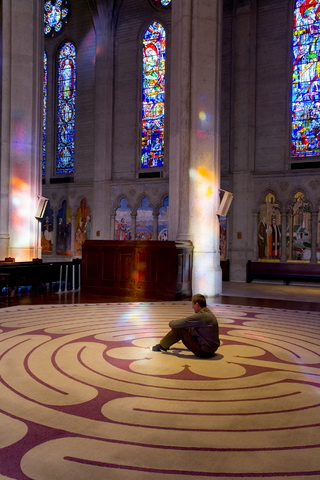
The invitation does not differ much from the provisions for Anglican converts already in place in the U.S. Known as “Anglican use,” the 1980 provisions allowed Episcopal parishes and priests to keep most of the Anglican liturgy from the Book of Common Prayer and retain a married priesthood (once they are re-ordained in the Catholic Church). Yet only a handful of parishes and priests took the Vatican up on its offer and became Anglican use.
While dissent over liberalism in the Episcopal Church, particularly the ordination of women as priests, drove the earlier arrangement, the new plans by the Vatican are much larger and global in scale and are partly a response to escalated challenges to world Anglican identity, hinging on issues of church authority and sexual morality.
In the last five years, the Anglican communion has been rocked by the issue of gay rights in the church, specifically the ordination of a homosexual bishop in the Episcopal Church. This has resulted in a split in the US, with conservative dissenters forming their own church, the Anglican Church in North America and related offshoots, while Anglican churches in much of the Global South declared themselves out of communion with the Episcopal Church.
But the genesis of the current Vatican plans took place before the crisis had unfolded, when leaders of long-time breakaway Anglican groups organized under an umbrella organization, known as the Traditional Anglican Communion (TAC), and approached the pope about the prospect of joining the church as a recognized group with its own leadership, much in the manner of the Catholic lay order Opus Dei. While the new plan falls short of establishing such an organization, it does allow for former Anglicans and their parishes to form “personal ordinariates,” which are similar to military ordinariates that transcend diocesan boundaries for Catholics in the armed services around the world.
Such groups would be headed by former Anglican priests or even bishops, although no provision is made for consecrating such leaders as Catholic bishops. Most Anglican bishops are married, and the the fact that a celibate episcopate is widely held both among Catholic and Eastern Orthodox churches suggests that married former Anglican bishops will not be on Rome’s agenda anytime soon.. There is the possibility that Anglican married laymen could be accepted for ordination on a case-by-case basis, according to Damian Thompson of the Telegraph newspaper of London. Until now, only former Anglican priests who were married could be considered for Catholic ordination.
It is unknown yet how many Anglicans will drawn to Rome’s new provisions. Inside the Vatican magazine (November) reports that some estimate “hundreds of thousands” Anglican faithful leaving their church and move over to Rome. In England, The Tablet magazine (October 31) estimates that likely to take up the Vatican’s offer will be limited to conservative Anglo-Catholics, numbering up to 8,000 clergy and lay members.
In the US, those most likely to be interested in moving to Rome will be among the smaller “continuing” Anglican bodies that are members of TAC, rather than those who have recently left the Episcopal Church, such as the newly formed Anglican Church of North America. Such a group as the Anglican Church in America (ACA), which is highly Anglo-Catholic, stressing sacraments and traditional liturgy, has hailed the Vatican move as an “answer to prayer.” But in interviews at a prominent ACA parish in Baltimore, Michael Sean Winters of the The Tablet found the members nonplussed about the Vatican’s plans, with no one expressing an interest in becoming Catholic.
Anglican use parishes and leaders contacted by Religioscope report many inquiries from Anglicans about the new provision. In an interview with Religioscope, C. David Burt, secretary of the Anglican Use Society, said that the most significant aspect of the Vatican’s invitation is that the proposed “personal ordinariates” will have more freedom to develop, as they will be headed by former Anglicans and not be under the jurisdiction of ordinary bishops. Under the current Anglican use arrangement, dioceses and bishops are required to sponsor such parishes.
Burt added that the “timing of the Vatican decision” coinciding with many Episcopalians leaving their church over moral issues, may affect how it is received by Anglicans. This differs from the “Catholic issues,” such as the ordination of women, that drove the original Anglican use movement, he said.
Richard Cimino
Richard Cimino is the founder and editor of Religion Watch, a newsletter monitoring trends in contemporary religion. Since January 2008, Religion Watch is published by Religioscope Institute. Website: www.religionwatch.com.